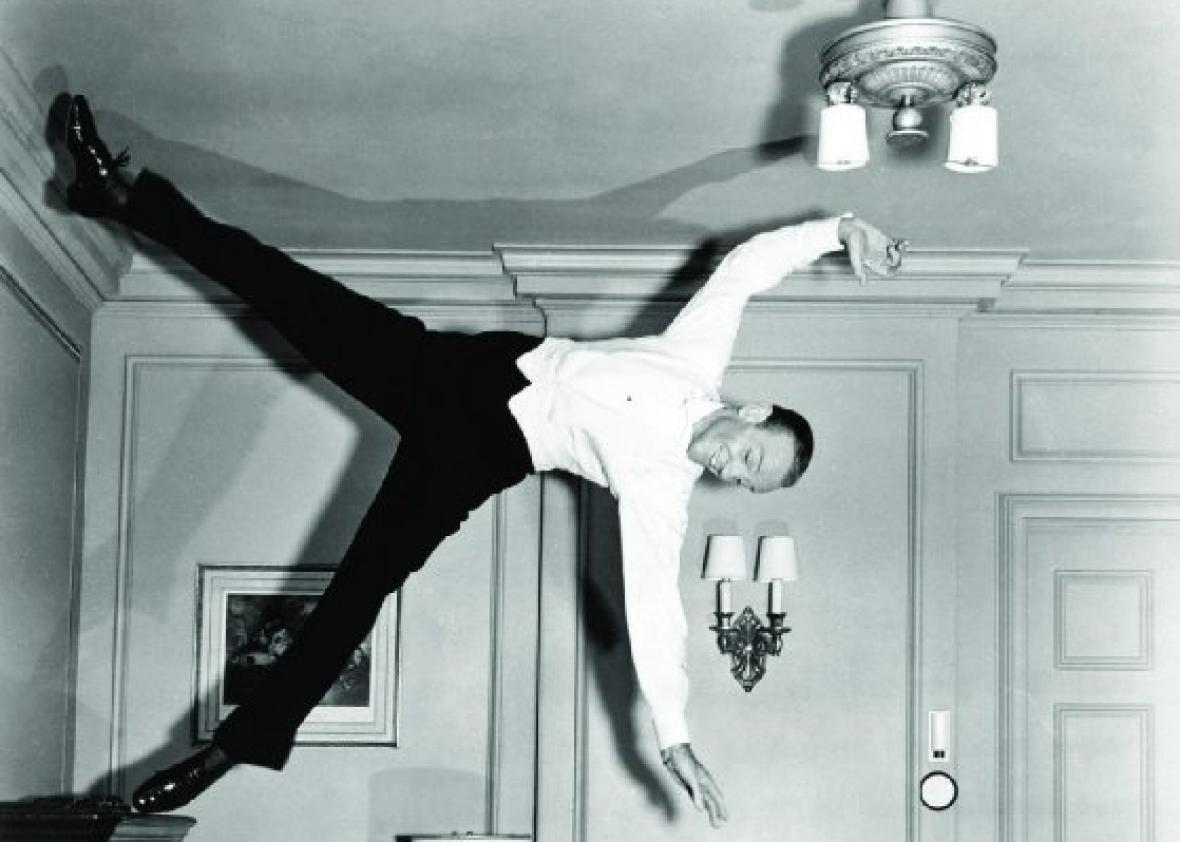Tuesday is Fred Astaire’s 117th birthday, which is as good an excuse as any to look back at what made him one of the greatest dancers—and stars—of all time. He was exceptional on the dance floor, but it was his charm and charisma, more than any technical skill, that made him a legend. Not even Werner Herzog is immune, as he told NPR:
The stories of these films are always very insipid, and Fred Astaire is a man who has a real foolish face, and yet I love him. He has this magic that only can be found in cinema.
There’s no sense calling any list a collection of his best dances, since the correct answer is “all of them.” But to mark the occasion, here are some personal favorites.
“Pick Yourself Up,” (Swing Time, 1936)
The Astaire and Rogers musicals integrated their dance sequences into their plots; rather than have the film stop for a dance, the dance was usually part of the plot. Swing Time manages this by making Ginger Rogers’ character a dance teacher. Astaire feigns not being able to dance to talk to Rogers but has to salvage the situation when he inadvertently gets her fired. (Her boss is Eric Blore, one of the great stuffed shirts in cinema.) Watching the duo float over the dance floor is as exhilarating as always, but what sets this sequence apart is that it set up one of the best gags in any of Astaire’s films. Victor Moore tries to save Helen Broderick’s job the same way Fred saved Ginger’s; to say he doesn’t dance quite as well as Fred Astaire is putting it mildly. (Gag not included, but really, shouldn’t you watch Swing Time in its entirety anyway?)
“No Strings,” (Top Hat, 1935)
Astaire usually has one solo dance in his early films, and this is the one from Top Hat. It takes him a while to begin dancing, but once he gets going, he converts an entire hotel room into a giant drum. This sequence stands out in particular because of the genius tracking shot down into the room below Astaire’s, where his brilliant dancing suddenly becomes nothing but noise keeping Ginger Rogers from sleeping. The look she gives him at the end is also an all-time great. And the perpetually befuddled Edward Everett Horton was never better.
“You’re All the World to Me,” (Royal Wedding, 1951)
It’s the dance that spawned countless imitations and a notorious Dirt Devil commercial, but it’s worth revisiting the original to see just how exuberant Astaire’s choreography is. Sure, it’s a trick shot, but Astaire’s perfect execution of the special effect only becomes more impressive when you see how it was done.
“Let’s Face the Music and Dance,” (Follow the Fleet, 1936)
Many people say that “Cheek to Cheek” in Top Hat is the most romantic Astaire and Rogers dance. These people are not to be trusted. There are plenty of counterarguments: “Let’s Face the Music and Dance” only happens within Follow the Fleet’s play-within-the-film, Rogers’ dress hits Astaire in the face, there’s not much romance in a relationship between two suicidally depressed people. But none of that matters: From the elegant Art Deco set to the perfectly tailored clothes and ethereal choreography, these few minutes of film are the most swooningly gorgeous dream Hollywood ever created. Happy birthday, Mr. Astaire.
